Kingdom Fungi Class Agaricomycetes | Division Basidiomycota Rank Genus | |
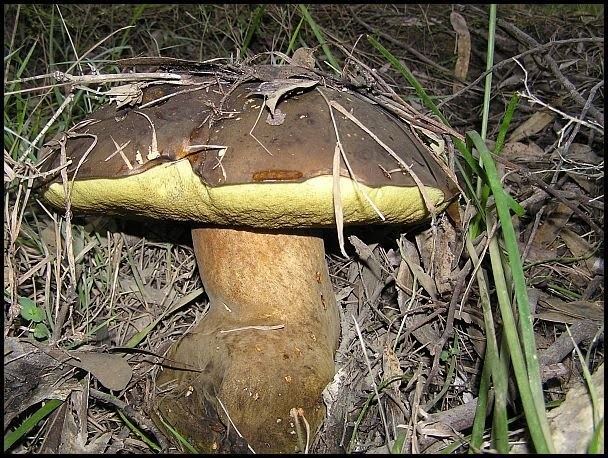 | ||
Similar | ||
Phlebopus marginatus salmon gum bolete australia
Phlebopus is a genus of fungi in the family Boletinellaceae (suborder Sclerodermatineae of the Boletales order). The genus has a widespread distribution in subtropical and pantropical regions, and contains 12 species. The species are saprobic, with some possibly able to form mycorrhizae with exotic trees in certain conditions. It contains the gigantic Phlebopus marginatus, the cap of which can reach 1 m (3.3 ft) in diameter.
Contents
- Phlebopus marginatus salmon gum bolete australia
- Phlebopus marginatus fungi kingdom
- Taxonomy
- Description
- Importance
- Species
- References
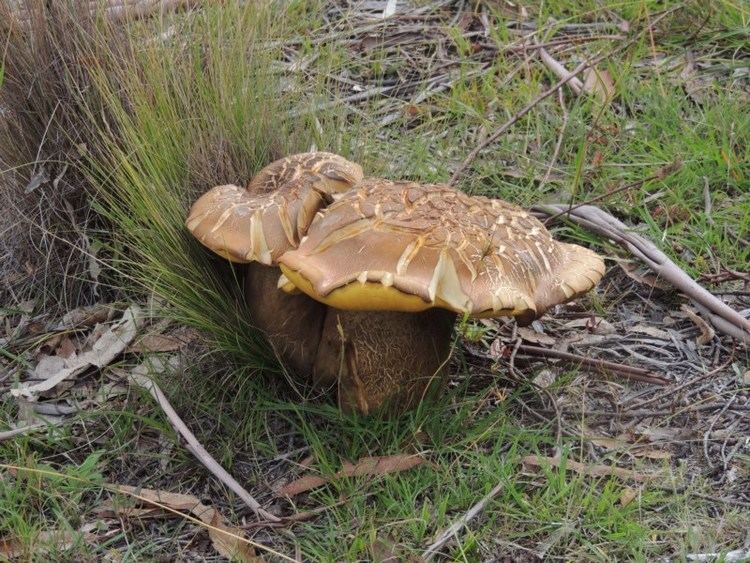
Phlebopus marginatus fungi kingdom
Taxonomy
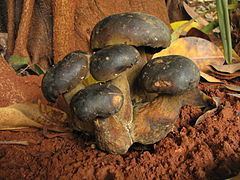
The genus was originally described as a subgenus of Boletus by Roger Heim in 1936, and raised to generic status by Rolf Singer that year. It was later redescribed with another type species (Phaeogyroporus braunii) under the name Phaeogyroporus by Rolf Singer in 1944. This name was used until 1981, when a specimen of Phlebopus colossus was collected and mycologist Paul Heinemann designated it as the lectotype.
The genus name is derived from the Greek Φλεβο- "vein" and πους "foot".
Description
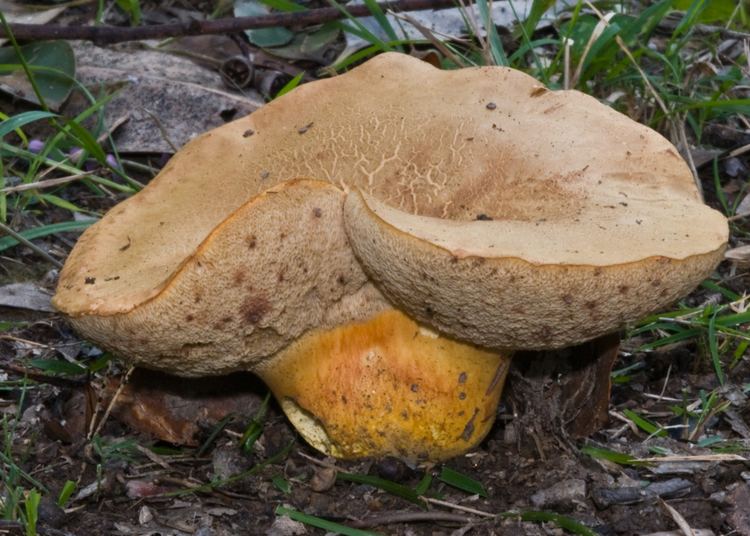
Phlebopus is similar in appearance to species in the genus Gyrodon, but distinguished by its olive-brown to brown spore print, its stem which is never hollow, and its smooth spores which are brownish when viewed with a light microscope.
Importance
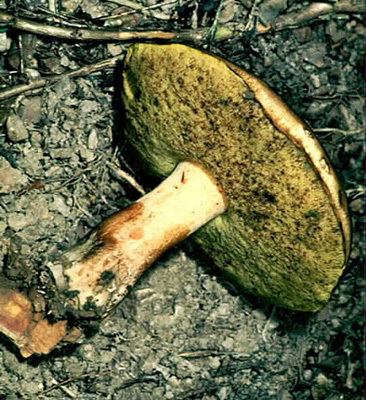
Phlebopus tropicus has been shown to form a crust of mycelium around the roots of species of Citrus in Brazil covering colonies of the comstock mealybug Pseudococcus comstocki which attack the roots of these plants after they have been carried there by ants (Solenopsis saevissima var. moelleri); these mycelial crusts are called criptas by Brazilian writers. The Pseudococcus living in symbiosis with the fungus is believed to be the immediate reason for the subsequent death of the affected trees, but the action of an endotrophic mycorrhizal fungus weakens the plant before the attack of the Pseudococcus takes place.
Phlebopus portentosus is a popular edible in the cuisine of northern Thailand. P. bruchii is consumed as an edible in Argentina.
